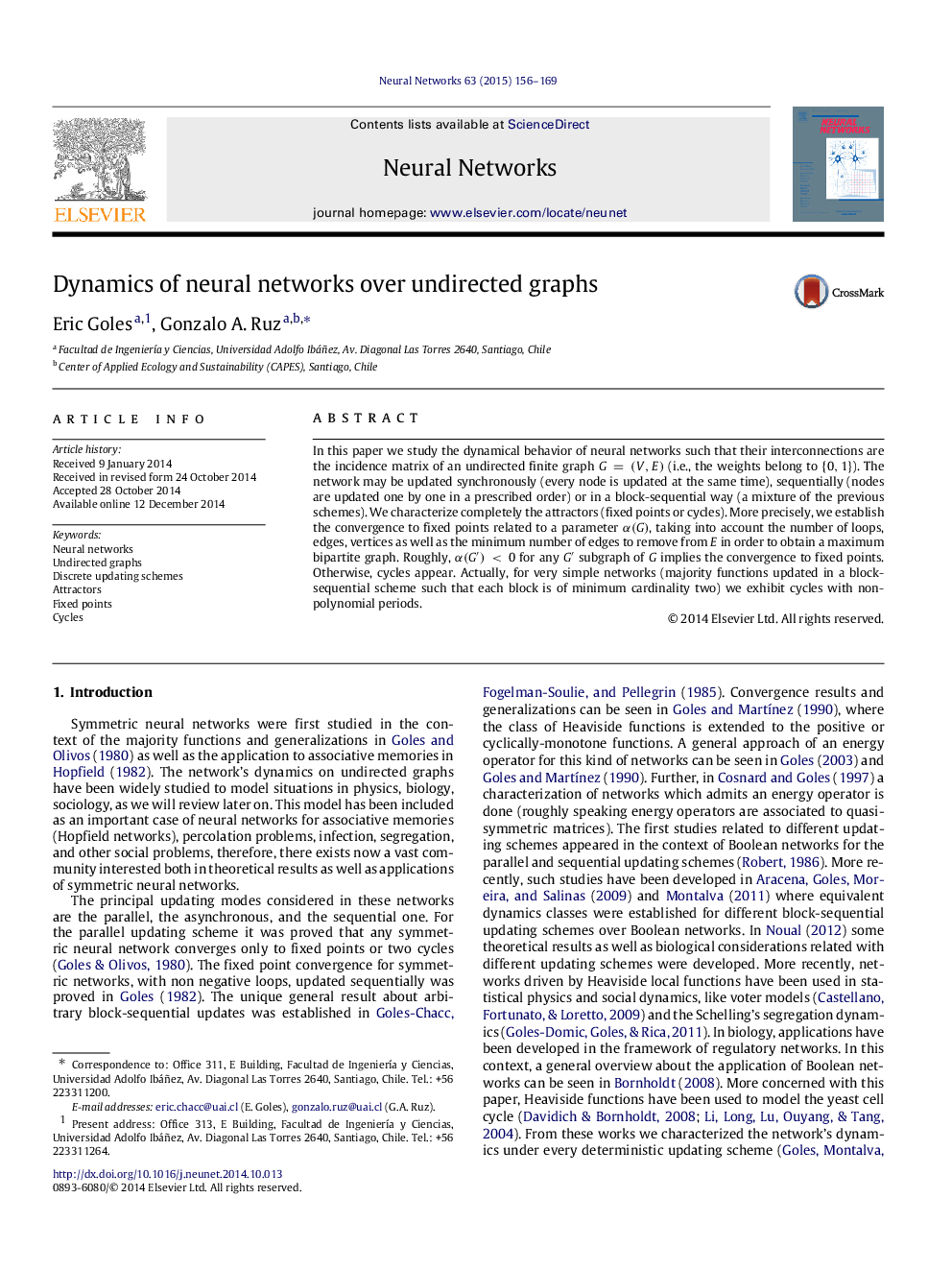| Article ID | Journal | Published Year | Pages | File Type |
|---|---|---|---|---|
| 403911 | Neural Networks | 2015 | 14 Pages |
In this paper we study the dynamical behavior of neural networks such that their interconnections are the incidence matrix of an undirected finite graph G=(V,E)G=(V,E) (i.e., the weights belong to {0,1}{0,1}). The network may be updated synchronously (every node is updated at the same time), sequentially (nodes are updated one by one in a prescribed order) or in a block-sequential way (a mixture of the previous schemes). We characterize completely the attractors (fixed points or cycles). More precisely, we establish the convergence to fixed points related to a parameter α(G)α(G), taking into account the number of loops, edges, vertices as well as the minimum number of edges to remove from EE in order to obtain a maximum bipartite graph. Roughly, α(G′)<0α(G′)<0 for any G′G′ subgraph of GG implies the convergence to fixed points. Otherwise, cycles appear. Actually, for very simple networks (majority functions updated in a block-sequential scheme such that each block is of minimum cardinality two) we exhibit cycles with non-polynomial periods.
